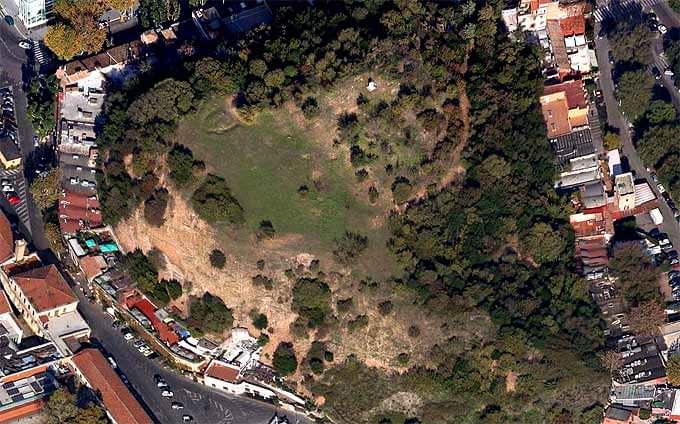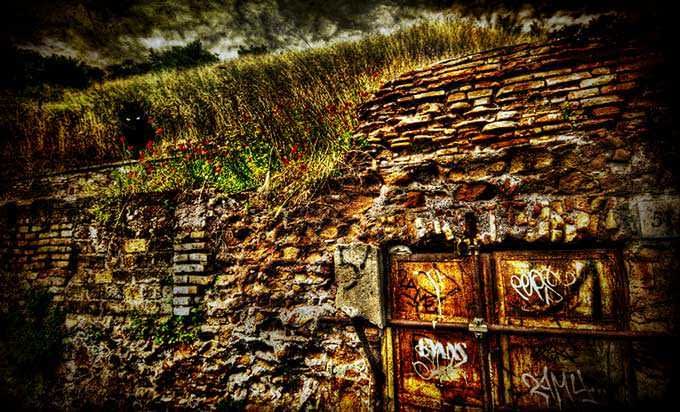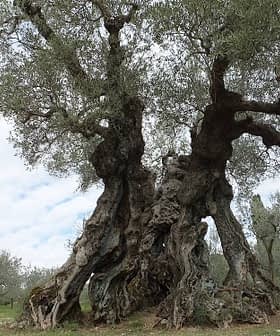In reality, Testaccio is an industrial dumping site, an artificial hill created by the planned piling up of discarded oil amphorae, fundamentally from Baetica. Many of these amphorae are “labelled” in the shape of seals, graphite and painted data (tituli picti) that provide an enormous and privileged wealth of information about the estates, the production systems, the product quality and the tax controls of the period, meaning that essentially, these labels were not all that different to those currently in use by producers and packaging entities, and they are of vital interest for the social and economic history of the Roman Empire.
Monte Testaccio was an industrial dumping site for amphorae, the vast majority of which came from ancient Baetica (nowadays, Andalusia), to its role as an historic archive of decisive importance to understand how the world of the olive worked back then. Given the level of interest in the subject, we will now delve a little deeper, analyzing its particular condition as an ecological dump and what it represents with a view to understanding the true size of olive oil production and sale in Ancient Rome.
An ecological dump
On reaching Ostia from the major Hispanic-Baetica estates, the amphorae were unloaded to be directly transported by wholesalers to their respective warehouses: emptied into horrea filled with enormous dolia located in the port itself, from which the oil would subsequently be sold to retailers, or sent to Rome where it would undergo a similar process.
In both cases, the empty amphorae represented a real problem: they could not be reused for anything else, nor was it profitable to send them back to their place of origin. Moreover, if they were stored they quickly became sites of bad smells and infection due to the rotting of the oil residues that impregnated the walls of these containers.
And so an effective solution needed to be found. This is where the extraordinarily practical nature of the Romans quickly sprang into action to find one. Thus, a controlled dump aimed exclusively at the withdrawal from circulation of these recipients was created.
This is how Mount Testaccio was born, located within the Aurelian Walls, to the southeast of Rome, at the foot of the Aventine Hill and on the right bank of the Tiber. A small hill of around 50 meters over the surrounding land, with a perimeter of slightly more than 1500 meters and a surface area of roughly 2 hectares that spread over an area of warehouses and port installations –such as the horrea Seiana, possibly used to store oil with a view to controlling its distribution and possible market oscillations.

Google Maps
A legend steeped in olive oil
The hill is not only impregnated with amphorae, but all sorts of historic legends and difficulties, as it played a very important role in the city’s life. Carnivals, orgies and popular feasts associated with the wine harvest were celebrated here until just last year; the sides of the hill were used to build caves in which to age wine, and the mount became the headquarters of one of the most traditional Stations of the Cross (Via Crucis) in Rome, as proven by the enormous cross that crowns the top of the hill.
Only some of the oil amphorae from Baetica reached Testaccio, which has been the object of study of a Spanish archaeological mission for years now, directed by José Mª Blázquez and José Remesal (further information can be found first-hand on the website http://ceipac.gh.ub.es/, which is also managed by the latter), and these were constantly plundered until the 18th century, or partially destroyed by the Vatican artillery, which used the eastern side of the mount for target practice. Many other amphorae had different destinations or were simply scattered along the way, used perhaps as building materials. According to E. Rodíguez Almeida, over 13 million recipients were lost, and should this be true, the Baetica oil sales figures would shoot up to a volume that is hard to comprehend, even in our modern times.
To create the dump, built in various phases, the Romans came up with a perfectly rational piling system which with time would allow for the organic growth of the site. The amphorae (raised up on the backs of the cavalry, as the mount grew higher) were staved in, stacked on their sides in a stepped formation and the insides were filled with fragments of other already broken recipients. It was then all covered with quicklime to seal in bad smells, insects and any other harmful effect for the population.
Highly practical information
Thanks to their good state of conservation, many of the amphorae accumulated in the belly of Mount Testaccio still have the figlinae seals of origin on their outer surfaces, some graphites and, above all, numerous details painted at the time of packaging and later (tituli picti), which as a general rule, include essential information with a view to getting to know the major production estates and the product taxation or, quite simply, the name of the navicularii (shippers) or mercatores (businessmen) responsible for transporting the product to the gates of Rome.
There they had a specific temple dedicated to their patron: Hercules Victor Olivarius, located in the Forum Boarium, right beside the Tiber and not too far from the Testaccio. This circular temple has been identified as the Temple of Vesta, built around the middle of the I century B.C. At present, it is one of the classic images of the archaeological landscape that made up the ancient Urbs, located beside the Circus Maximus, in front of the famous church of Santa María in Cosmedin, that holds the Mouth of Truth on its portico.
Precursors of the modern-day labels
An amphora with its complete tituli picti, painted on its neck and shoulders, with either a reed or a brush, and black or red paint, can provide us with the following information:
- Consular date: that is, the reference to the consuls that governed Rome at the time, describing the exact year in which the transaction took place, thus giving us a chronology of an absolute nature that is very hard to achieve in archaeology.
- Weight in pounds: a full amphora usually weighed around 100 kilograms (30 the recipient and 70 the content)
- Name of the exporter, which may have been the owner of the oil production estate or an intermediary; and of the consignee
- City or fundus (estate) of origin; s well as the place of embarkation of the cargo
- Name of the navicularii (shippers)
.
Tax controls, including the names of the respective controllers. Nowadays we know that the Roman tax system (at least, when it came to the exportation of Baetica olive oil) was well-organised at the beginning of the II century A.D., even when the controls had to be quite rudimentary and fraud was common.
One way or another, these tituli picti could be considered precursors of the modern-day labelling system. The information contained was necessary, extremely complete and vital for the Roman olive oil trade.






